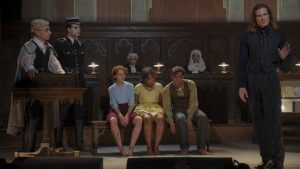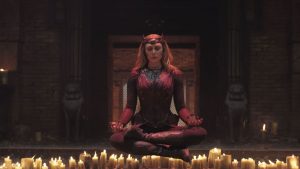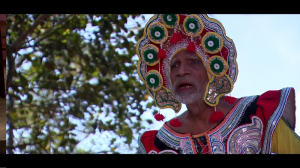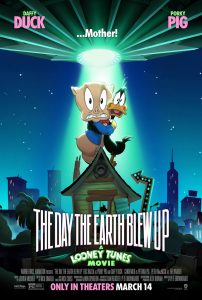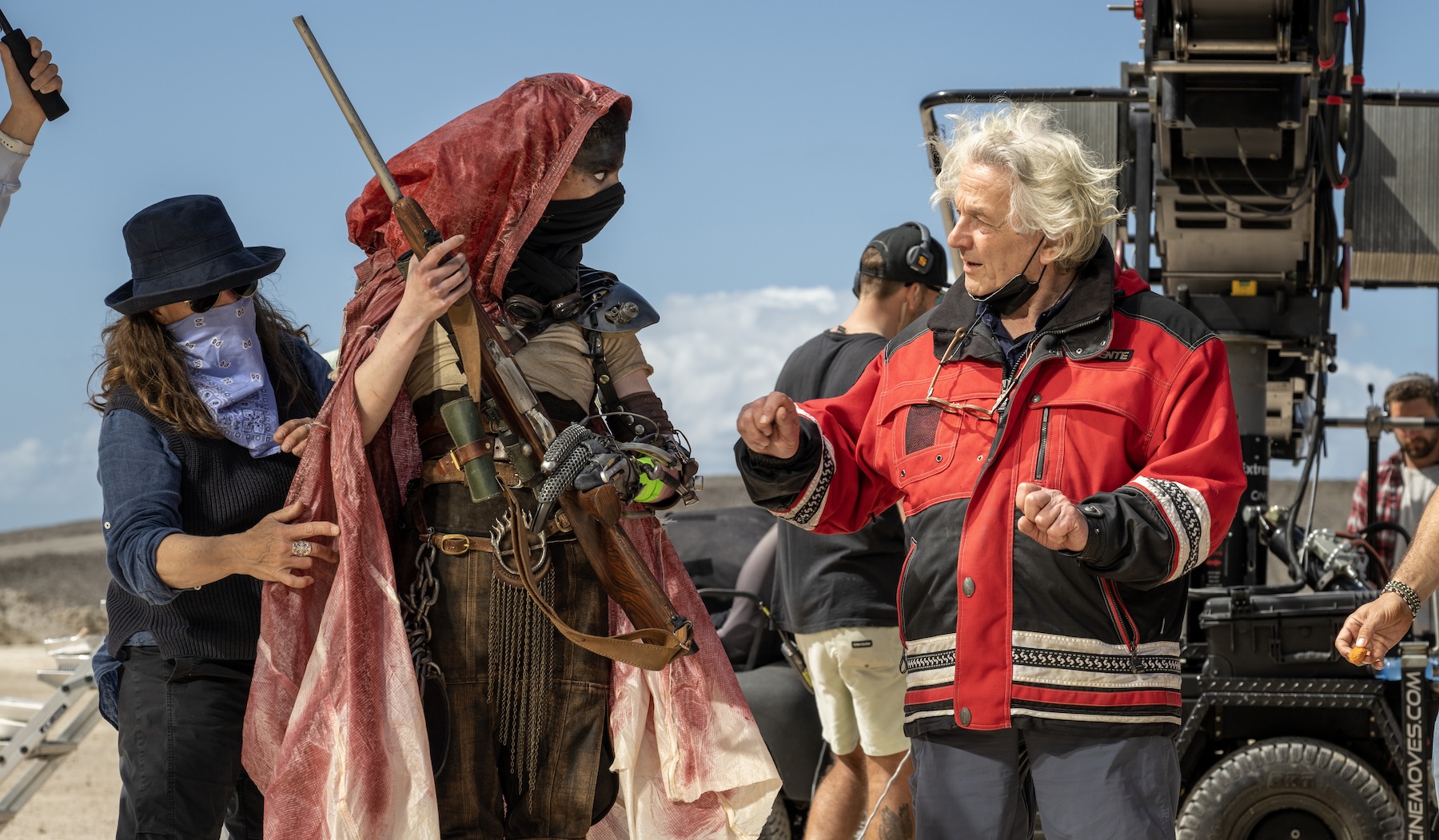
Film critic Andrew Sarris changed his profession forever when he introduced, to English-speaking cinephiles at least, the concept of “auteur theory.” The general conceit is that some rarified directors are so gifted, or commanding, in their control over the process of film production that they alone can give a film a “personal or unique stamp.” They are the ones who become the author of the movie you’re watching. If anyone. It’s a seductive theory which encourages the critic to look for points of narrative, visual, or thematic similarity between a filmmaker’s work. The more ideas or images that rhyme, the potentially more impressive the auteur’s command over the medium becomes.
However, while it is hard to dispute the existence of auteurs, the concept at times devalues the contributions of a film’s many other collaborators—especially if they’re, say, editors, production designers, or cinematographers a certain director likes to work with time and again. It also tends to devalue some filmmakers whose most remarkable gift is not their ability to burrow ever further down into their exploration of personal themes and ideas, but rather their stunning versatility to do the opposite. There are indeed some directors whose entire careers are defined by the uncanny and chameleonic ability to shift between styles, tones, and even cinematic perspectives. They might still qualify as that elusive thing we call “the auteur,” but their strength is in their diversity instead of uniformity. Here are some exactly such helmers.
WB / Universal
George Miller
It’s become a recurring joke on social media to remind folks that the same madman who gave us characters like “Immortan Joe” and “Imperator Furiosa” is also the guy behind Babe and Happy Feet. Which is somewhat true. While Babe (1995) was George Miller’s passion project for years, with the Australian director getting the rights to Dick King-Smith’s The Sheep-Pig book and spending years developing, writing, and producing it, he ultimately stepped down from directing it—instead letting his one-time protege Chris Noonan helm the film. One might even say that Miller’s still tangible fingerprints on the finished film belie flaws in “auteur theory.”
Whatever the case might be, Miller definitely directed the sequel, Babe: Pig in the City (1998), as well as Happy Feet (2006) and Happy Feet Two (2011). He also helmed pensive familial drama Lorenzo’s Oil (1992) and sexy dark comedy/’80s star vehicle The Witches of Eastwick (1987). All of these were made while Miller found himself time and again returning to the Wasteland he first created in 1979’s Mad Max. Miller has indeed made five (and counting?) Max or Max-adjacent films, defining our pop culture idea of what a “post-apocalyptic” story should even look or feel like.
It’s a wildly diverse filmography that seems to swing crazily from pure nihilism to family-friendly sentimentality. But there is a connective tissue, which is Miller’s sincere interest in humanity (or animals with humanlike attributes), and the virtues within us that make life worth living. Whether basking in the fire of the Fury Road or the sight of a penguin tap dancing, Dr. George Miller (no, really, look it up!) is most interested in capturing our nobler instincts with vivid and muscular camera compositions. Mad Max’s father is a fuzzy humanist at heart!
WB
Michael Curtiz
Before auteur theory revolutionized how we thought of film directors, the Golden Age of Hollywood mostly rewarded directors who could show off dexterity in any number of studio genres or programmers. Well, few were more dexterous or a bit of a showoff than Michael Curtiz, a filmmaker who never had an easily quantifiable style or interest, but who nonetheless turned out masterpiece after masterpiece in nearly every kind of genre. Whether it was a drama, musical, swashbuckler, noir, or Western, Curtiz revealed a prenatural sixth sense of understanding the language necessary for the story at hand.
Read more
His most famous film remains arguably the greatest Hollywood film of all time, Casablanca (1942), a pitch perfect World War II melodrama and romance with the unforgettable cast. It’s the one that earned Curtiz an Oscar, but he was already WB’s golden boy after turning Errol Flynn into a star via the definitive pirate movie, Captain Blood (1935), and then the definitive Robin Hood movie, The Adventures of Robin Hood (1938). Both of which are heavy influences to this day on films like Pirates of the Caribbean and Star Wars. Curtiz also directed Yankee Doodle Dandy (1942), Mildred Pierce (1945), and perennial December favorite, White Christmas (1954). Whether you wanted Bogie to brood or Bing Crosby to give a bubbly belt about Christmas trees, you get Curtiz.
20th Century Fox / WB
Howard Hawks
Another Golden Age Hollywood director who had more discernible interests than Curtiz, Howard Hawks also ran the gamut of genres or house styles during a decades-spanning career. As an auteurist’s favorite of that era, you can still trace Hawks’ interest with tough guys and tougher gals—who often spoke to each other in either breathless double entendre or rapid-fire one-liners. Yes, there is a faint similarity between Lauren Bacall’s cigarette-smoke filled interest in To Have and Have Not (1944) and Rosalind Russell’s ratatat newspaper reporter in 1939’s His Girl Friday (they both wear pants!). However, the fact that one of them occupies space in a pseudo-noir/WWII melodrama and the other is in one of the definitive screwball comedies can trigger cognitive dissonance.
Indeed, Hawks helped define the screwball with Cary Grant classics like Friday and Bringing Up Baby (1939) in the ‘30s, and then helped define noir in the ‘40s with movies like The Big Sleep (1946), which cemented Humphrey Bogart and Bacall as one of the great onscreen love stories… much to Hawks’ jealousy. He could also do thirsty musicals like the Marilyn Monroe-calling card Gentlemen Prefer Blondes (1953) and Westerns that cast John Wayne as the bad guy, a la Red River (1948). The genre or tone can change, but you always knew when you were hearing a Hawks character speak.
Fox / Columbia Pictures
Rob Reiner
Some might have forgotten all these years later, but Rob Reiner had one of the best directing streaks in film history. Between 1984 and 1995, the one-time “Meathead guy” from All in the Family produced seven stone cold classics across multiple genres. He also made North in that timeframe, but nobody’s perfect. Even so, there are legions of fans who would make a case that This Is Spinal Tap (1984), Stand By Me (1986), The Princess Bride (1987), When Harry Met Sally… (1989), Misery (1990), A Few Good Men (1992), and The American President (1995) are just that.
For us, it’s the sheer confidence Reiner exemplified, whether while helping pioneer the “mockumentary” subgenre of comedy in Spinal Tap or adding depth to the rom-com in Harry Met Sally that shows his true range. For more than a decade, Reiner constantly made the right choice, be it by adapting two of Stephen King’s most unconventional tales—one a coming of age drama and the other a dark comedy/horror fable about an author and his fans—or casting Jack Nicholson as the ultimate stuffed military shirt in legal thriller A Few Good Men. Each film stood leagues apart from the one that came before it, and each is still watched and celebrated today.
The Coen Brothers
One always knows when they’re watching a Coen Brothers movie, which is quite the testimonial since brothers Joel and Ethan have spent years twirling between styles, aesthetics, and influences. The Midwestern siblings got their foot first in the door when Joel worked as an assistant editor on 1981’s The Evil Dead. From those humble beginnings, they soon carved their own identity starting with the directorial feature debut, Blood Simple (1984), a grim neo-noir that didn’t even give a hint of the Looney Tunes excess of their subsequent thriller/dark comedy, Raising Arizona (1987).
Until their recent creative separation a few years ago, the pair have alternated between Westerns defined by bottomless nihilism, like No Country for Old Men (2007), and happy-go-lucky feel-good cinema like the pair’s self-described “Idiot Trilogy” (or quartet) with star George Clooney: O Brother, Where Art Thou? (2000), Intolerable Cruelty (2003), Burn After Reading (2008), and Hail, Caesar! (2016). Each of those are strikingly different comedies, with Cruelty being a loving been venomous deconstruction of the rom-com, for example. Conversely, the brutality of Fargo (1996) is played straight, even as its Midwestern mirthfulness can sometimes echo the bittersweetness of True Grit (2011). Every one of their efforts reveal a strong empathy for their fellow man and all the walks of life that add up to the American experience.
Universal / Columbia
Ang Lee
For a long period, Ang Lee was not certain he would have a career in filmmaking. Despite attending multiple universities between China and the U.S. to pursue his dream of working in the creative arts, after finishing study at NYU, he was unemployed for six years and unable to find a foot in the door. Imagine what a sensitive and original voice to cinema we would have lost if he gave up.
Lee’s career is marked by its attention to detail for characters and a bold passion for visual experimentation and innovation. It explains how his first entirely English-language directorial effort could be perhaps the best Jane Austen adaptation to date, the Emma Thompson and Alan Rickman-led Sense and Sensibility (1995), which also earned him his first Best Picture Oscar nod. His second came for the visually dazzling wuxia masterpiece, Crouching Tiger, Hidden Dragon (2001), which popularized martial arts fantasy films, and Michelle Yeoh, in the West. Around the same time he would make a morally complex Civil War epic, Ride with the Devil (1999), a Freudian superhero slice of madness, Hulk (2003), and the “gay cowboy” love story that finally won him a Best Director Oscar, Brokeback Mountain (2005). All of which could be viewed as prologue to something as challenging and personal as Lust, Caution (2007).
20th Century Fox
Robert Wise
Another classic Hollywood helmer whose filmography is defined by its range, Robert Wise was viewed as something of a studio hand who just happened to make some of the best movies of the mid-20th century. Whether they be musicals like West Side Story (1961), which he co-directed with the stage’s Jerome Robbins, and The Sound of Music (1965), or thought-provoking science fiction like The Day the Earth Stood Still (1951), Wise could do it all and perhaps didn’t get all the credit he deserved in his lifetime.
This is, after all, the man who also made one of the most influential ghost movies ever, The Haunting (1963), as well as the first major Michael Crichton adaptation, The Andromeda Strain (1971).
Paramount Pictures
Billy Wilder
One more Hollywood stalwart we’d be remiss to ignore is Billy Wilder. While he didn’t define film noir, he certainly refined it by crafting the film that cemented what a “femme fatale” was in Double Indemnity (1944) and then using this same cynical movement in Hollywood storytelling to hold a mirror up to the industry in the biting Sunset Blvd. (1950). He could also bring that black-and-white bitterness to strangely wistful rom-coms like Audrey Hepburn classic Sabrina (1955) and Marilyn Monroe’s best film, Some Like It Hot (1959). He also invented the modern dramedy about sex and life in the big city via The Apartment (1960). Meanwhile he had time to do cynical World War II thrillers like Stalag 17 (1953).
RKO / Paramount
George Stevens
George Stevens’ career is interesting because it is defined by the eclectic films he made early in his life, and the far more downbeat and melancholy pictures he made after returning from World War II. Serving as a semi-documentarian in the field had a profound effect on Stevens’ interests and styles. But the divide also explains how a career can begin with one of the finest musicals ever made, Swing Time (1936), and the colonialist fantasy (read: aso racist) adventure flick that heavily influenced Indiana Jones and the Temple of Doom, Gunga Din (1939).
After the war, however, Stevens made brooding Westerns like Shane (1953) and important “message” movies like the progressive A Place in the Sun (1951) and melodramatic epic, Giant (1956).
Warner Bros. Pictures
Ridley Scott
It seems these days that when most folks think of Ridley Scott, they think about his historical epics. They have good reason, as Sir Ridley obviously enjoys making them. Some are works of an almost painterly genius like Gladiator (2000), Kingdom of Heaven (2005), and The Last Duel (2021). Others leave something to be desired, a la Robin Hood (2010) and Napoleon (2023). All are visually sumptuous.
But those are not the beginning and end of Scott’s talent. For a slightly older demographic, Scott’s work might be most synonymous with genre-defining world-building in waking sci-fi nightmares like Alien (1979) and Blade Runner (1982). He even can channel that same talent as a force for optimism, hence The Martian (2015). But while Scott seems happiest building worlds, he also can use that gift for iconic modern day fables like Thelma & Louise (1991) and underrated thrillers and dramedies (see: 2003’s Matchstick Men). His movies might be hit or miss, but whether it’s a newfound classic or a spectacular misfire, they’re always visually interesting, worthwhile experiences.
Steven Spielberg
I was hesitant about including Steven Spielberg on this list. While the beloved beard changes genres and contexts with practically every film, you never once forget you’re watching a Steven Spielberg movie. That overwhelming and dazzling command of the camera, composition, blocking, and of course audience-manipulating sentimentality makes his touch inescapable. But this is also the man who released Jurassic Park and Schindler’s List in the same year! (1993, for the record). That alone offers a microcosm of Spielberg’s versatility.
One is the type of movie we often associate with Spielberg—a special effects-heavy blockbuster that awes both its characters and audiences—and the other is the type of film he’s become more passionate about in the back half of his career: a historical period piece that shines light on some aspect of the Jewish or American experience important to Spielberg. Both directions provide a cornucopia of examples in his career: Jaws (1975), Close Encounters with the Third Kind (1977), and the Indiana Jones films on one side, Munich (2005), Lincoln (2012), and The Post (2017) on the other. However, the fact he can still in his 70s produce one of the finest films in his career, including the unexpectedly vital West Side Story remake of 2021 and the semi-autobiographical The Fabelmans (2022) speaks to his continued range.
Columbia / WB
Martin Scorsese
Another director we were on the fence about including is one of the other inarguably living legends, Martin Scorsese. Like Spielberg, you’ll never not notice a fluid Scorsese tracking shot on steadicam, or his and editor Thelma Schoonmaker’s penchant for the sharp jump cut. However, when detractors mad at the maestro for talking ill of Marvel movies claimed Scorsese only makes “gangster movies,” it’s clear some folks take for granted the breadth of Scorsese’s talent.
Yes, Marty has made some of the finest crime films of all time—Goodfellas (1990), The Departed (2006), and The Wolf of All Wall Street (2013, and yes it definitely counts!) included. But he also made the heartbreaking romantic tragedy and period piece, The Age of Innocence (1993), the brilliant anti-biopic about a Hollywood legend, The Aviator (2004), and the most challenging and thought-provoking film ever attempted about Jesus, The Last Temptation of Christ (1988). Scorsese has a massive range… but his films typically share the same ultimate fixation: flawed men whose passions turn into obsessions, and then finally self-destructions. Whether it is Christ succumbing to his father’s will on the Cross, Daniel Day-Lewis’ Newland Archer denying himself the love of his life out of some misguided romantic notion, or Travis Bickle executing an apartment’s worth of pimps and drug dealers, these are all men whose compulsions lead to a form of self-annihilation.
It can even lead Scorsese to making the occasional mistake like telling real life horror of The Killers of the Flower Moon story from the vantage of the killers. Nonetheless, Scorsese has shown the ability to take his passions for love, God, cinema, and self-destruction to almost every conceivable corner of the narrative medium.
The post Directors with the Most Weirdly Diverse Filmographies appeared first on Den of Geek.



